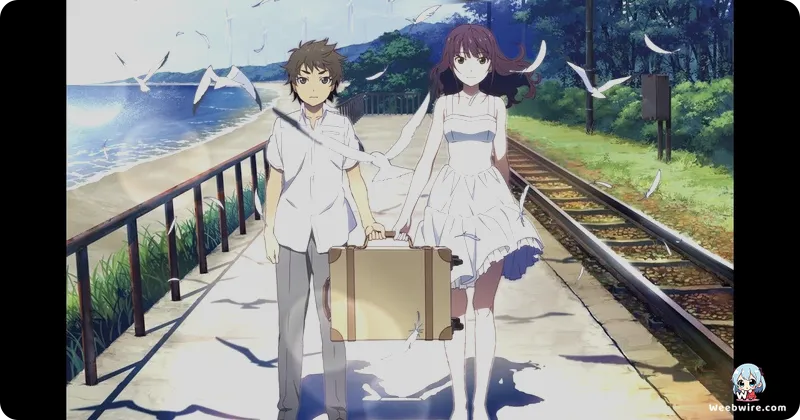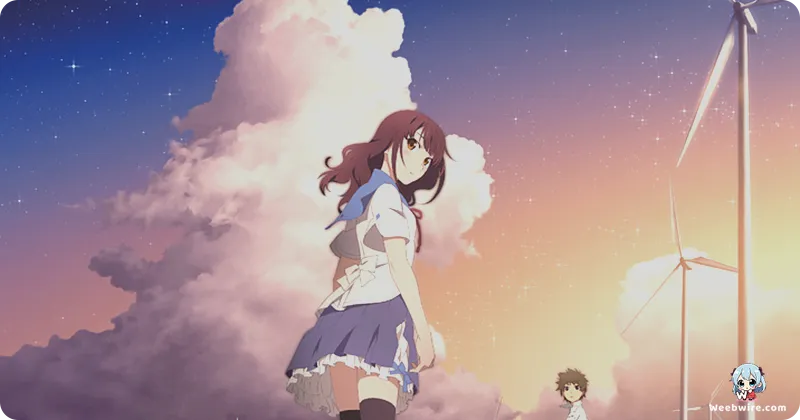Igniting Imagination: The 'Fireworks' Anime Film's Secret History and Artistic Vision

The 2017 anime film, Fireworks, Should We See It from the Side or the Bottom? affectionately known as Fireworks, burst onto screens as a dazzling spectacle. It captivated audiences with its exquisite animation, heartfelt romance, and a touch of the supernatural. Beyond its immediate visual appeal and the melancholic narrative of young love navigating alternate realities, this cinematic marvel, brought to life by Studio Shaft, holds a rich tapestry of untold stories and creative decisions that elevate its intrigue.
From Live-Action Roots to Animated Brilliance
At its core, Fireworks is a brilliant reimagining of a venerated 1993 live-action television drama. Penned by the visionary director Shunji Iwai, the original Uchiage Hanabi, Shita kara Miru ka? Yoko kara Miru ka? was a 50-minute special within the If: Moshimo anthology series. This predecessor was not just a fleeting broadcast; it earned critical acclaim, including the prestigious Directors Guild of Japan New Directors Award for Iwai, cementing its status as a cult classic. The anime masterfully expands upon this beloved foundation, translating its poignant themes and narrative into a distinctive animated form, a lineage often surprising to new viewers.
The film's unique directorial vision stems from a dynamic collaboration. While Akiyuki Shinbo, a name synonymous with avant-garde aesthetics from his work on the Monogatari series and Puella Magi Madoka Magica, is credited as chief director, the primary helming responsibilities fell to Nobuyuki Takeuchi. Takeuchi, with a strong background as animation director for hits like Bakemonogatari and Mawaru Penguindrum, infused the project with a fresh perspective, seamlessly blending it with Shinbo's signature abstract backdrops and unconventional camera work. This synergy resulted in a visually arresting film that sparked fervent discussions among the anime community regarding its narrative rhythm and stylistic flair.
Unconventional Casting and the Enigmatic 'If' Marble
Adding another layer of distinctiveness, Fireworks notably cast prominent live-action actors for its lead voice roles. Masaki Suda, celebrated for his versatility in films like Gintama and Death Note: Light Up the New World, lent his voice to Norimichi Shimada, while the highly acclaimed Suzu Hirose, known for her roles in Our Little Sister and The Third Murder, embodied Nazuna Oikawa. This unconventional choice, diverging from traditional anime voice casting, generated performances praised for their naturalism, yet also ignited debates, undeniably imbuing the film's auditory landscape with a singular character.

Central to the film’s whimsical charm and its deeper philosophical currents is the enigmatic 'if' marble. This mysterious, luminous orb, discovered by Norimichi, holds the power to rewind time, unlocking pathways to alternate realities shaped by different decisions. Far more than a mere plot device, the marble serves as a potent visual metaphor for the protagonists' profound desire to reshape their circumstances and transcend the perceived limitations of their small town existence. Through these cleverly interwoven time-rewind sequences, the film transforms adolescent summer dilemmas into profound meditations on fate and the boundless possibilities inherent in a single day, a testament to Studio Shaft's inventive storytelling.
A delightful detail directly echoing the film's title is the children’s spirited debate: do fireworks appear 'flat' or 'round' when observed from the side? This seemingly trivial argument evolves into a core visual and thematic thread, with the film playfully illustrating fireworks in both two-dimensional and three-dimensional forms, shifting with perspective and the reality Norimichi experiences. This imaginative visual discourse not only adds a layer of enchantment but also subtly reinforces the film's exploration of perception, subjective reality, and artistic expression, transcending simple narrative progression.
A Soundtrack That Soared
Finally, the film’s musical triumph, the theme song “Uchiage Hanabi” (Fireworks), performed by the dynamic duo Daoko and Kenshi Yonezu, became a cultural phenomenon. Its melancholic melody and evocative lyrics perfectly encapsulated the film’s themes of fleeting summer romance and wistful longing, resonating deeply with audiences. The track soared to the top of the charts, becoming one of the most iconic anime theme songs of its year and significantly amplifying the film's cultural footprint. Its widespread popularity often served as an entry point for new viewers, showcasing the powerful synergy between animated storytelling and compelling music. Fireworks stands as a bold testament to creative risks in animation, offering a truly unique viewing experience that continues to inspire discussion and appreciation among its dedicated fanbase.
Credits
Fireworks (Uchiage Hanabi, Shita kara Miru ka? Yoko kara Miru ka?)
Author
Shunji Iwai (Original Concept)
Cover Art
Akio Watanabe (Anime Character Design)
Studio
Shaft
Publisher
TOHO (Distributor)
Producers





